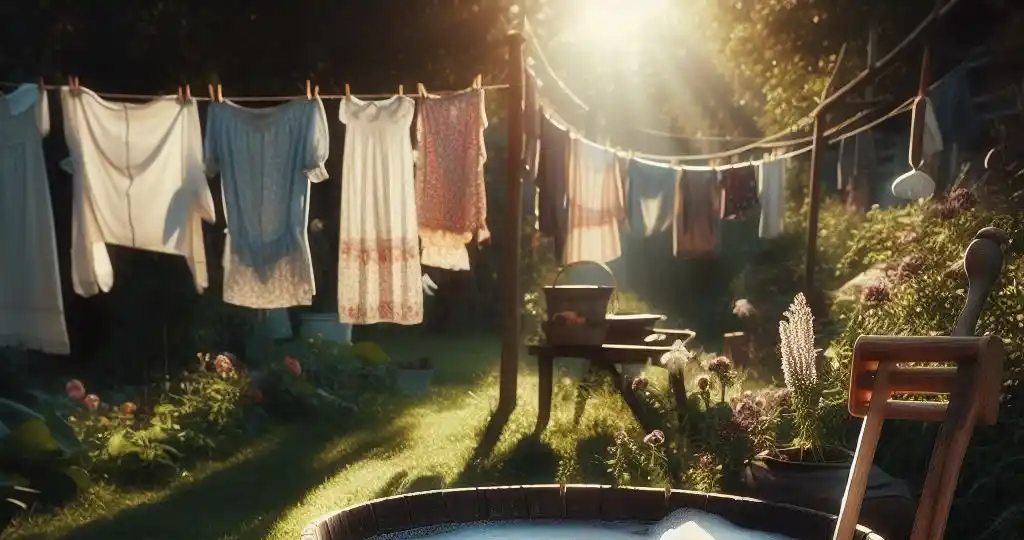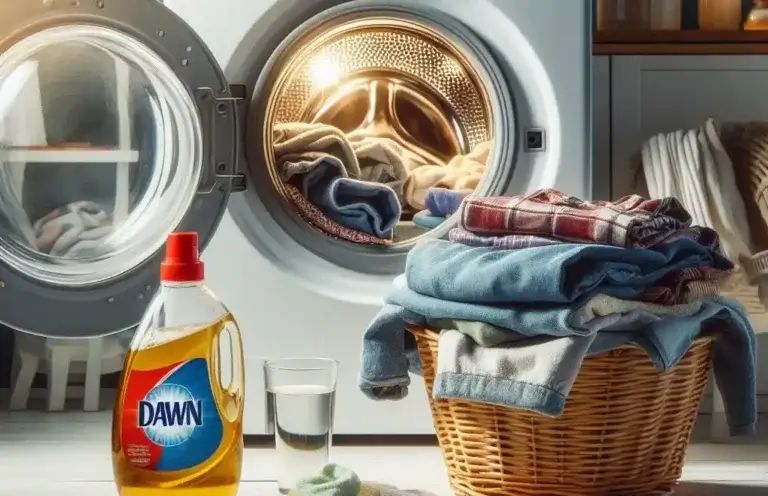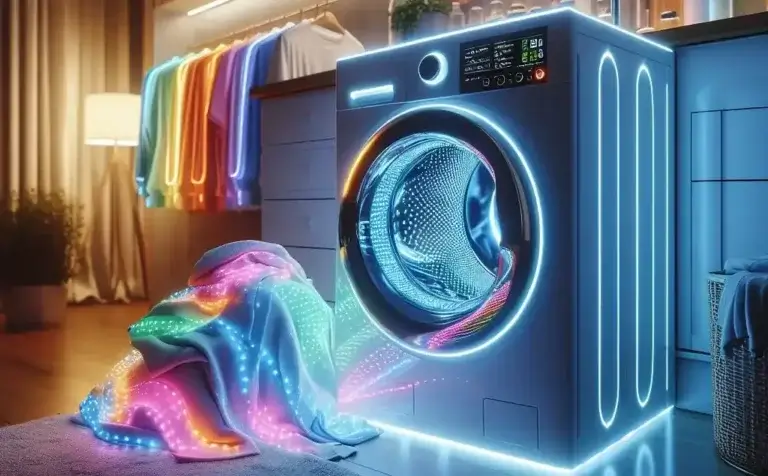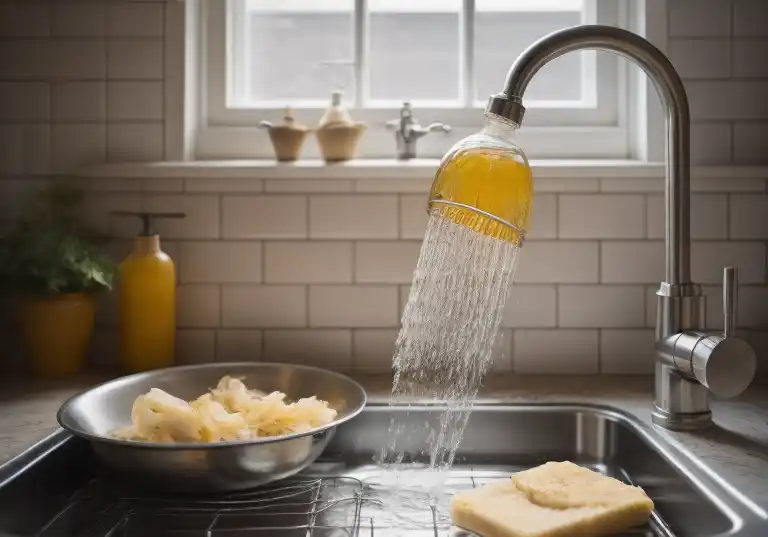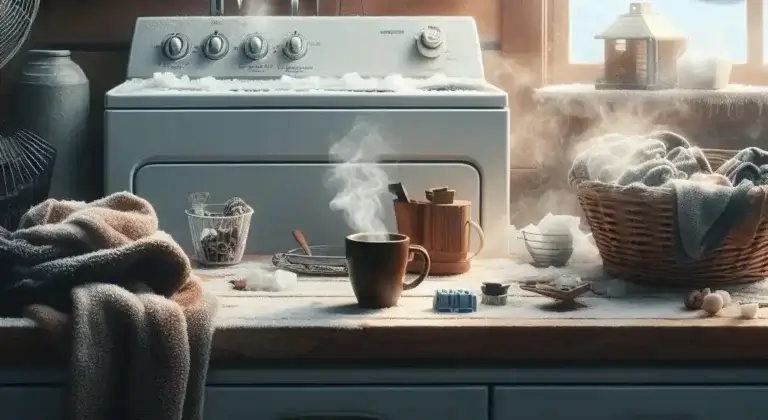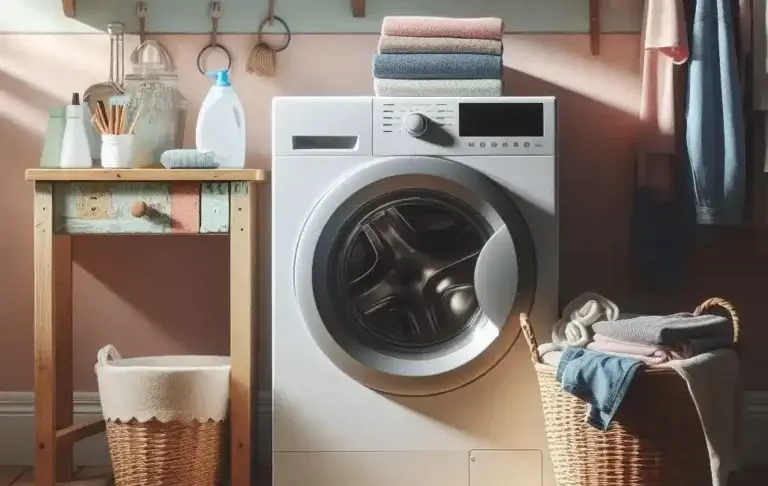Laundry Detergent Alternatives: Eco-friendly Laundry Detergent Alternatives For Clean Clothes Without Harsh Chemicals
Are you looking for an effective laundry detergent alternative that is also eco-friendly? Many mainstream cleaning products, including laundry detergents, contain harmful chemicals that may irritate sensitive skin, harm the environment, and leave an unsettling residue on clothes.
Luckily, there are plenty of safe, non-toxic laundry detergent substitutes you can use to get your clothes clean without exposing your family or the planet to dangerous substances. These natural laundry detergent alternatives use the cleaning and disinfecting power of ingredients like baking soda, lemon juice, vinegar, bar soap, and more.
In this comprehensive guide, you’ll discover:
- The problems with conventional laundry detergents
- Why you should switch to natural detergent substitutes
- 12 of the best eco-friendly alternatives to laundry detergent
- How to make your own homemade laundry detergent
- Tips for getting great results when washing clothes without detergent
- FAQs on DIY and natural laundry care
So if you’re ready to make the switch to safer, greener clean for your family’s clothes, read on!
Table of Contents
Why You Should Avoid Mainstream Laundry Detergents
Before we get into the best natural laundry cleaning options, let’s take a look at why so many people are ditching conventional laundry detergents.
Detergents like Tide, Gain, and All contain chemicals that:
- Disrupt hormones
- Pollute waterways
- Cause skin irritation and allergies
- Accumulate in fabric and the body over time
Ingredients to watch out for include:
Surfactants
Surfactants like alkylbenzene sulfonates give detergents their cleaning power. But many standard surfactants don’t readily biodegrade, meaning they linger in the environment. Some people also find these compounds irritating to skin.
Fragrances
The artificial fragrances added to laundry detergents come from hundreds of undisclosed chemical ingredients, many of which have been linked to allergies, headaches, and respiratory distress.
Preservatives
Preservatives like methylisothiazolinone help detergents stay fresh on the shelf. However, they’re also associated with neurological issues and contact dermatitis.
Brighteners & Enzymes
Optical brighteners give clothes an ultra-white appearance while enzymes break down stains. Yet they can trigger sensitivity in those with skin and respiratory conditions.
Over time, all these harsh chemicals accumulate both on clothes and within our bodies.
And because most laundry detergents are petroleum-based, they have an outsized environmental footprint from production through waste. Their ingredients disrupt marine food chains and seep into groundwater.
For the health of people and the planet, green detergent substitutes are a smarter solution…
Why Eco-Friendly Laundry Detergent Alternatives Are Better

Natural laundry detergent options bypass these problems through plant- and mineral-based ingredients that get your clothes clean, naturally.
Benefits include:
- Gentler on skin. No risk of irritation, rashes or chemical sensitivity.
- Safer for septic & sewers. Won’t harm wastewater microbes that treat waste.
- Better for the Earth. Avoid synthetic chemicals that persist and accumulate.
- Cost savings. DIY recipes can save you money over branded detergents.
- Hypoallergenic properties. Good for those with multiple chemical sensitivities.
- No residue left behind. Natural cleaners fully rinse away with water.
- Nourish laundry equipment. Gentler than conventional formulas, protecting washers.
- Effective cleaning power. Natural surfactants lift stains without harshness.
And while natural laundry detergent picks often cost less than conventional options per wash, you can save even more money by making your own laundry soap at home.
But first, let’s look at ready-made eco-friendly detergent substitutes you can buy online and in stores…
12 Best Eco-Friendly Laundry Detergent Alternatives
If concocting DIY laundry soap seems too time-consuming, no worries! There are now lots of green laundry detergent alternatives on the market that spare you from measuring out ingredients.
Many of these pre-made natural detergents come in plastic-free packaging too. Just look for the words “biodegradable,” “plant-based,” “non-toxic” etc. when shopping.
Below are 12 of the best ready-made natural laundry detergents for sensitive skin and environmental protection:
1. Puracy Natural Laundry Detergent
Puracy’s concentrated formula is plant- and mineral-based for effective cleaning power. It’s also non-toxic, hypoallergenic, vegan, child/pet safe, and comes in scent options.
2. ECOS Laundry Detergent
With only biodegradable plant-based ingredients, ECOS cleans thoroughly while avoiding skin irritation. Plus, they use post-consumer recycled plastic bottles.
3. Dropps Laundry Detergent Pods
These plastic-free pods filled with plant-based cleaning agents dissolve residue-free in your washer. They come scented or fragrance-free to suit different preferences.
4. Cleancult Laundry Liquid
Powered by foaming coconut cleansers, Cleancult’s concentrated liquid detergent cuts grease and lifts stains without chemicals. The pretty packaging is 100% post-consumer recycled too.
5. Seventh Generation Laundry Detergent
A long-standing brand in eco-friendly cleaning, Seventh Gen uses a plant-based formula safe for sensitive skin types and graywater systems.
6. Attitude Laundry Detergent
Made in Canada with plant-derived, biodegradable ingredients, Attitude’s formula is hypoallergenic, non-toxic and safe for septic systems and the ocean.
7. Cleary Organics Laundry Liquid
With organic plant oils and essential oils, Cleary’s Laundry Liquid is fragrance-free and suitable for those with chemical sensitivities. The bottle is partly made with recycled plastic.
8. BioKleen Laundry Powder
Instead of water, BioKleen uses oxygen-based cleaning molecules for powerful stain removal. And the cardboard packaging is home-compostable.
9. Molly’s Suds Laundry Powder
Fragrance-, dye- and allergen-free, Molly’s Suds uses plant-derived surfactants and sodium carbonate to lift dirt without irritation. Plus, children and pets can safely use this hypoallergenic formula.
10. Grab Green Natural Laundry Detergent Pods
Grab Green’s dissolvable pods come packed with plant-based cleaners and essential oils. The packaging is partially recycled/renewable and can also be recycled after use.
11. Sun and Earth Laundry Detergent
With biodegradable plant-derived cleaners, Sun and Earth’s formula removes odors and stains without chlorine, phosphates or optical brighteners.
12. Meyer’s Clean Day Laundry Detergent
Meyer’s laundry soap uses plant-based, biodegradable cleaning agents and essential oil scents. The bottle contains up to 50% post-consumer recycled plastic.
How To Make Your Own Laundry Detergent
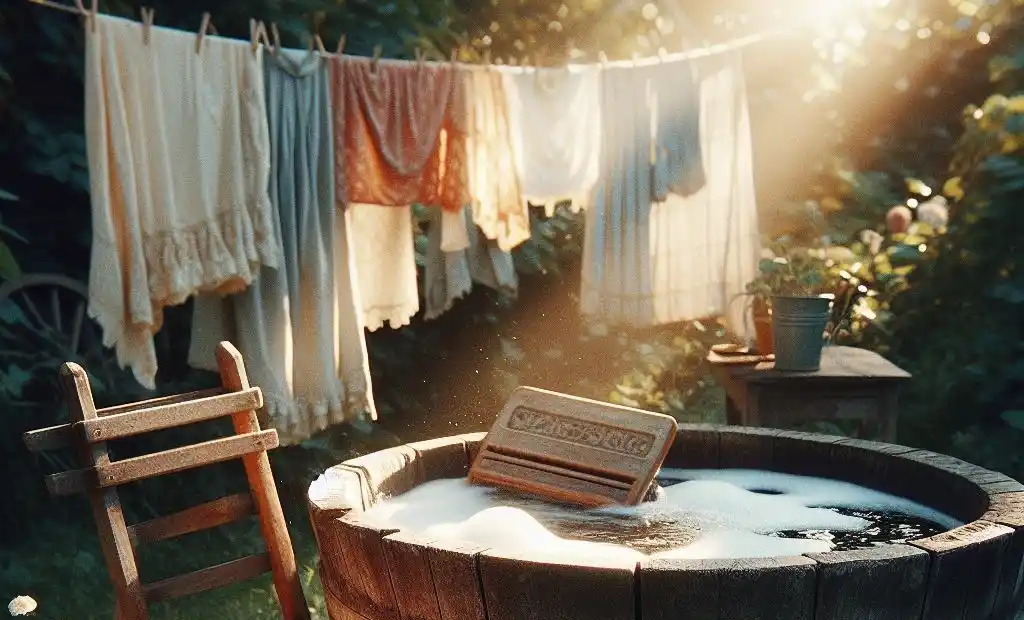
What’s even better than buying eco-friendly detergents? Make your own from scratch! DIY natural laundry detergents are often less expensive per wash than commercial options.
All you need are a few basic ingredients – most of which you likely have in your pantry already.
Below is an easy homemade laundry detergent alternative anyone can whip up…
Ingredients:
- 4 cups water
- 1 cup washing soda
- 1 cup baking soda
- 1⁄2 cup citric acid
- 1⁄2 cup liquid Castile soap
- 10-15 drops essential oils (optional)
Instructions:
- Bring water to a boil in a pot. Remove from heat and add the washing soda and baking soda. Whisk until fully dissolved.
- Stir in the citric acid, Castile soap and essential oils if using.
- Allow to cool completely then transfer to a sealable glass jar.
- To use: Add 1⁄4 to 1⁄2 cup per laundry load.
This Borax-free recipe is safer for kids, pets, and the planet than conventional soaps. The washing soda lifts stains, baking soda deodorizes and softens, while Castile soap removes oils and grease.
Vinegar or lemon juice also helps brighten whites and kill bacteria without synthetic chemicals. Just add 1⁄2 to 1 cup to the wash or rinse cycle as a fabric softener alternative.
If essence oils irritate your skin, omit them. Or try hypoallergenic options like lavender, tea tree, ylang ylang or chamomile.
When You Run Out of Laundry Detergent – Effective Temporary Stand-Ins
We’ve all experienced that “oh no” moment after adding clothes to the washing machine only to find you’re completely out of laundry detergent. Before you run to the store, check your pantry and cleaning closet – you likely have items on hand to rescue that laundry load.
In a pinch, here are homemade detergent substitutes you can use to wash clothes until you replenish your stock…
Baking Soda
One of the best substitutes for commercial detergents is simple baking soda. A true multi-tasker, baking soda softens water so it can soak up dirt and odors. It’s also a natural degreaser that tackles oily stains.
To use for laundry, add 1⁄2 cup baking soda to the wash cycle for medium loads (use up to 1 cup for larger loads). While it doesn’t produce many suds on its own, it loosens soil for clean clothes and neutralizes unpleasant scents.
Lemon Juice or Vinegar
Acids like lemon juice and vinegar naturally whiten fabrics and help rinse away residue. They also fight germs lingering in clothing fibers.
For all-purpose cleaning and stain removal, lemon juice and its citric acid are excellent for breaking down grime.
For deodorizing and disinfecting, white distilled vinegar is a solid choice with its acetic acid content. The acidity helps remove alkaline residues like soap scum and minerals.
Add 1⁄2 to 1 cup of either to wash and rinse cycles. You can use lemon juice or vinegar solo as a DIY laundry booster. But teaming them up with baking soda activates even more cleaning power.
Borax
Like baking soda, Borax is a natural mineral salt that softens water and acts as a laundering booster. With alkaline pH, it also helps remove acidic-based stains.
To sub for laundry detergent, use 1⁄4 to 1⁄2 cup borax per wash load along with other DIY detergent substitutes.
While considered safe and eco-friendly, some people wish to avoid Borax around pregnant women, babies and young children. So use your discretion based on family health factors.
Bar Soap
Low on liquid detergent? Grab a few bars of soap! Any plain bar soap like castile, glycerin or dove can work in a pinch.
Grate a bar of soap into flakes then add approx. 3-6 tablespoons to the wash cycle. It naturally cuts through oils and rinses cleanly too.
Depending on water conditions, bar soap may produce more suds than liquid varieties. So if your machine is sudsy, cut back to 2 tablespoons grated soap next time.
Body Wash
Check your shower – that leftover body wash works similarly to liquid soap detergents!
The surfactants that create lather and remove dirt, oils also break down stains and odors in laundry.
For a single load, add approx. 1⁄4 to 1⁄2 cup body wash to the wash cycle. It won’t contain brighteners but it’ll get clothes clean in a pinch.
Dish Soap
If you can use dish detergent to hand wash delicates, it stands to reason it works for machine-washing clothes too.
The main drawback is dishwashing liquid creates lots of suds – which many washing machines don’t love.
So go slowly at first…add 2 teaspoons to 2 tablespoons max dish soap per laundry load. Scrape off suds if they billow up. Then you’ll know how much to use next time.
Shampoo
Hair shampoos are formulated to remove grease, sweat, and dirt buildup…so why not grungy clothes too?
Surfactants like ammonium lauryl sulfate give shampoo cleansing power. Just avoid conditioner-containing formulas which can leave fabric residue.
For laundry emergencies, add approx. 1⁄4 cup clear shampoo to wash water for moderate soil removal. It’ll work fine for casual clothes but not heavy-duty grime.
Washing Clothes Without Any Detergent? The Surprising Benefits
Think skipping detergent altogether means wearing dirty clothes? Think again! Washing with water alone actually has some unexpected benefits:
Saves money – at $0 per wash load
Extends clothing life – without chemical wear and tear
Prevents buildup – no detergent film and hard water scum
Better for delicate fabrics – remove soil without harshness
While you’ll still want to pretreat heavy stains beforehand with DIY pastes, water alone keeps casual everyday clothing fresh.
The key is using HOT 140°F+ water so heat successfully lifts dirt, sweat, and skin oils. Then rinses fully clear away.
For those with sensitive skin, skipping detergent also prevents contact dermatitis and rashes. Meanwhile, clothes retain their softness and color vibrancy over more wear.
Using water alone may take some time for those who love heavily scented laundry. But the benefits can outweigh expectations, making this green hack worth trying!
Getting Great Results From Natural Laundry Routine
Switching from conventional to DIY “green” detergents comes with a bit of a learning curve. Removing stubborn stains, avoiding residue, and using washers effectively takes some trial and error.
We’ll cover some of the most common tips and tricks…
Sort Properly
Always separate non-colorfast items and delicates from regular laundry before washing. This prevents dye transfer and fabric damage.
Since eco-friendly detergents are gentler, they may not remove all coloring from fabrics. So sorting avoids inadvertent dye disasters you’ll regret.
You can batch darks, brights, lights, whites and delicates into loads for efficiency. Just avoid mixing them together.
Wash in Hot Water
While cold washing saves energy bills, hot HOT water actually removes more dirt naturally when using green cleaners.
Aim for the highest temperature recommended for each fabric. Around 140° F is ideal for most cotton and linen items.
Saves bright colors, delicates and handwash-only clothes for cold and warm temps though.
Use Proper Dose
Too little natural laundry detergent won’t get clothes clean while too much can leave buildup. Start with the minimum amount stated per wash load then tweak as needed.
With homemade recipes, use measuring cups, not “eyeballing” scoop amounts for accuracy until you know what works.
When trying a new commercial eco brand, closely follow package instructions too.
Pretreat Stains
While natural detergents tackle everyday dirt, oil and sweat stains well, they need help breaking down stubborn grime.
Before washing, rub paste mixtures of baking soda, salt, lemon and vinegar on food, grease, blood or ink stains first.
Let sit for several minutes before washing in the machine. The abrasion bubbles through gunk so detergents lift it away easier during the wash cycle.
Add Laundry Booster
If clothes aren’t coming out as bright or soft as you’d like, add a natural booster to your wash routine.
Baking soda naturally softens and removes odors. Borax also helps strip residue and brighten it.
White vinegar – 1⁄2 cup per load – naturally removes soapy film and mineral buildup that makes fabrics dingy. It also kills bacteria leaving laundry refreshed.
These inexpensive boosters enhance eco-friendly detergents for the best results.
Line or Machine Dry
Both air drying and machine drying have pros and cons. See what method works best for your situation.
Line-dried laundry saves energy but can initially leave items stiff. To soften, dry then rewash fabrics in cold water with 1⁄2 cup vinegar only then re-dry. The vinegar residue leaves items fresher than warmer machine cycles.
If the machine is drying, clean the lint filter before each load. This not only prevents fire hazards but allows moisture to properly vent outdoors.
FAQs About Eco-Friendly Laundry Routine
Switching to greener clean for laundry comes with lots of questions! Here we’ll try to answer the most common FAQs…
Are natural laundry detergents as effective as regular kinds?
In many cases, yes. Premium natural detergent brands use plant-based ingredients specially formulated to remove oils, dirt, stains etc.
Some even harness the power of enzymes for heavy-duty cleaning rivaling top conventional brands.
The key is finding a green laundry product tailored to your needs – whether it’s a liquid, powder or pods. Then follow proper sorting, dosing, stain treatment, and drying methods suited to natural cleaners.
With some trial and error, you can get all your laundry – from gym clothes to cloth diapers – perfectly clean with plant-based detergents. And without the chemical residue, fragrances and pollution of main-stream brands.
Can I use natural laundry detergent in HE machines?
High-efficiency (HE) washing machines require low-sudsing detergents to properly activate and rinse during wash cycles.
Luckily, many eco-friendly laundry soaps are formulated for HE compatibility from the start. Since they derive suds from plant oils instead of sulfates, they naturally foam less.
That said, homemade recipes may still require some fine-tuning so suds don’t overwhelm your HE machine. Start with just 2 tbsp per load then tweak until you discover the ideal amount of suds for yours.
Also, HE compatibility doesn’t necessarily mean something is non-toxic. So be sure to vet any premade “green” HE detergent that has legitimately safe ingredients before buying.
How can I get whiter brights without bleach?
Chlorine and oxygen bleach keep whites looking crisp but also degrade fabric over time. For whiter brights the natural way, try these tactics instead:
Sunlight – The UV rays in sunshine naturally disinfect and brighten laundry sans chlorine. Hang items outside if possible or put damp clothes in sunny windows.
Baking Soda – Its mild abrasive properties lift stains from fabric without harsh chemicals. Add 1⁄2-1 cup per wash cycle.
Lemon – Lemon juice’s citric acid cuts through dingy residue, encouraging whiter whites. Add 1⁄2-1 cup juice to wash or rinse cycles.
Vinegar – Acetic acid removes soap scum that makes whites look dull. Add 1-2 cups white vinegar to wash and/or rinse cycles for whiter brights.
Hydrogen Peroxide – This eco-oxidizer bleaches natural color pigments. For lift without damage, add 1⁄2 cup to laundry with hot wash and full rinse cycles.
Why does my homemade detergent leave a residue?
When DIY laundry soap leaves a filmy residue after washing, it usually indicates a formula problem.
Most often, too much oil-based soap and not enough water/washing soda in the recipe is the culprit. This prevents ingredients from dissolving fully into wash water for complete rinsing.
Fix the issue by tweaking your homemade batch:
Cut oil content – Reduce the amount of Castile/other soap by 1⁄4 cup initially Up water – Add 1-2 extra cups warm water so corpuscles detach
Boost washing soda – Extra water softener/cleanser = no more film!
Add white vinegar to a rinse cycle also strips any leftover haze so fabrics feel brand new. Test a small load using an adjusted recipe before making a big batch.
Conclusion: Eco-Friendly Laundry Routine Wrapped Up
Ditching main-stream laundry detergents for safe, effective natural alternatives benefits health and home. Plant-derived formulas get great cleaning results without toxic chemicals.
By understanding active ingredients, following best practices for green products and fine-tuning recipes, you’ll get all the fresh, clean clothing your family needs.
Here’s a quick recap of what we covered today:
- Why chemicals in laundry detergents are an issue
- What makes natural laundry detergent substitutes safer + greener
- Top ready-to-buy eco-friendly detergent brands
- How to make DIY laundry detergent at home
- Emergency detergent stand-ins you likely have on-hand
- The upside of washing clothes in water only
- Pro tips for best stain removal and residue avoidance
- Answers to FAQs about green laundry routines
Implementing more sustainable habits like eco-friendly cleaning takes small steps. As you gradually swap out toxic products for safe, all-natural alternatives, you protect personal and environmental health.
As a bonus, greener living saves money too with DIY recipes! Who doesn’t love more green in their budget AND cleaner clothes?
Overwhelmed by all the info? Start with small switches like adding baking soda and vinegar to your usual detergent. Once you get comfortable with these boosters, experiment with homemade recipes.
Soon enough, you’ll discover an easy natural laundry routine that keeps your family in fresh, chemical-free clothes!

